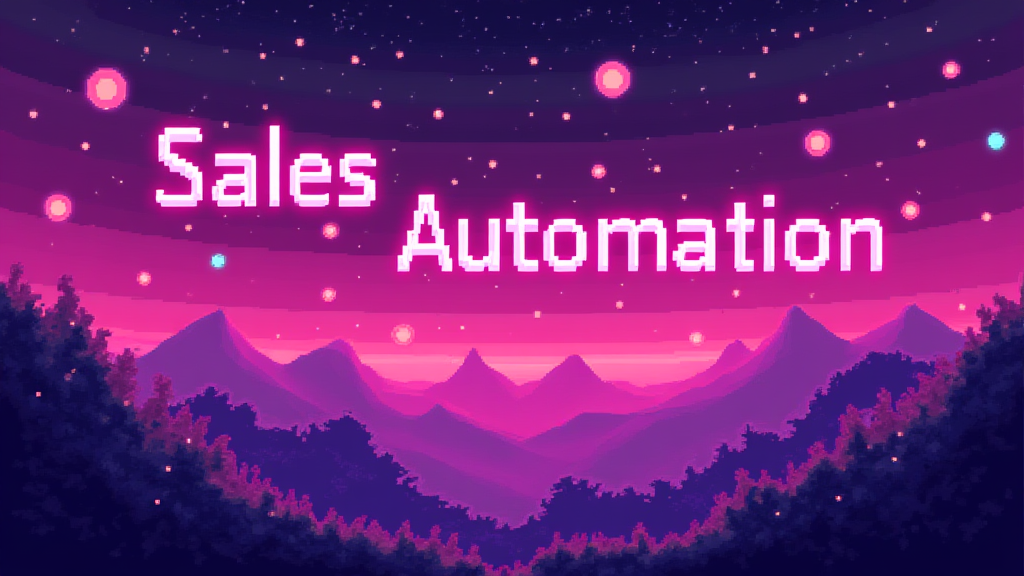Sales Automation: Streamline Your Sales Process

Published on: October 01, 2024
Sales automation is a game-changing strategy that leverages technology to streamline and optimize various aspects of the sales process. By automating repetitive tasks and workflows, sales teams can focus on high-value activities, ultimately improving efficiency and driving revenue growth. 🚀
Why Sales Automation Matters
In today's fast-paced business environment, sales automation has become a crucial tool for organizations looking to stay competitive. Here's why it matters:
- Increased productivity and efficiency
- Improved lead management and nurturing
- Enhanced customer experience
- Data-driven decision making
- Scalability of sales operations
Key Components of Sales Automation
Sales automation encompasses various tools and processes, including:
1. Customer Relationship Management (CRM) Integration
CRM systems serve as the backbone of sales automation, centralizing customer data and enabling seamless communication across teams. 📊
2. Lead Scoring and Qualification
Automated lead scoring helps prioritize prospects based on their likelihood to convert, ensuring sales reps focus on the most promising opportunities. 🎯
3. Email Automation
Personalized, trigger-based email sequences nurture leads and keep prospects engaged throughout the sales cycle. 📧
4. Sales Pipeline Management
Automated pipeline tracking provides real-time visibility into deal progress and helps identify bottlenecks in the sales process. 🔍
5. Reporting and Analytics
Automated reporting tools generate insights on sales performance, helping teams make data-driven decisions and continually improve their strategies. 📈
Benefits of Sales Automation
Implementing sales automation can yield significant benefits for organizations:
| Benefit | Impact |
|---|---|
| Time Savings | Up to 30% reduction in time spent on administrative tasks |
| Lead Response Time | 78% faster response to leads |
| Sales Productivity | 14.5% increase in sales productivity |
| Revenue Growth | Up to 10% increase in sales pipeline value |
Challenges and Best Practices
While sales automation offers numerous advantages, it's essential to be aware of potential challenges:
- Over-automation: Striking the right balance between automation and human touch is crucial.
- Data quality: Ensure data accuracy and consistency for effective automation.
- User adoption: Provide adequate training and support to encourage team-wide adoption.
- Integration complexity: Choose tools that integrate seamlessly with your existing tech stack.
To maximize the benefits of sales automation, consider these best practices:
- Start small and gradually expand your automation efforts
- Regularly review and optimize your automated processes
- Personalize automated communications to maintain a human touch
- Use A/B testing to refine your automation strategies
- Continuously train your team on new automation tools and techniques
The Future of Sales Automation
As technology continues to evolve, sales automation is poised for further advancements:
- AI-powered insights: Machine learning algorithms will provide even more accurate predictions and recommendations.
- Conversational AI: Chatbots and virtual assistants will handle more complex sales interactions.
- Predictive analytics: Advanced forecasting models will help sales teams anticipate market trends and customer needs.
- Augmented reality: AR technologies will enhance product demonstrations and customer engagement.
By embracing sales process automation, organizations can unlock new levels of efficiency, productivity, and growth in their sales operations. 🌟
Implementation Questions
As you consider implementing sales automation in your organization, ask yourself:
- Which repetitive tasks in our sales process could benefit most from automation?
- How can we ensure a smooth integration of automation tools with our existing CRM system?
- What key performance indicators (KPIs) should we track to measure the success of our sales automation efforts?
- How can we maintain a personalized approach while leveraging automation technology?
- What training and support will our sales team need to effectively adopt and utilize new automation tools?

















